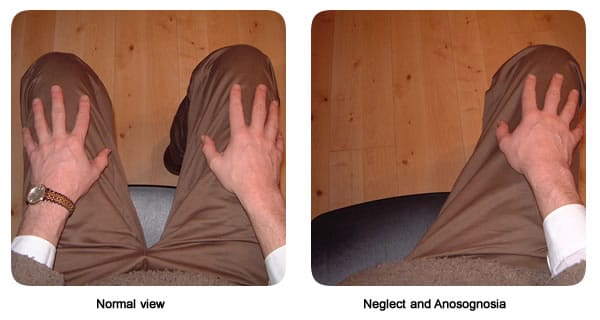Media Project: Dennis aka Bob the Builder
In my Neuro Aspects class, we are entrusted to participate in a Media Project. This project is to tap into our OT minds by creating a low tech, self-made tool that can be used as an intervention. My specific case study was over Mr. Dennis. Mr. Dennis is a 68 year old man that lives in a 'ranch style' home in a suburban neighborhood. He is a retired postman, and he enjoys gardening, woodwork, and weekly bowling nights with friends. Recently, Mr. Dennis experienced a right cerebral vascular accident (CVA), also known as stroke. A stroke in simpler terms is an interruption of blood flow to the brain. Either from a blockage of a blood vessel or a rupture of a blood vessel(s). The severity of a stroke can vary depending on the type of stroke and the location of where it occurred on the brain. In Mr. Dennis' case, he is currently experiencing these issues after the stroke: visual perception (figure ground & spatial relations), right/left discrimination, left neglect, decrease in attention, judgement and safety awareness, impaired sensation, poor dynamic sitting/standing balance, high muscle tone in fingers in wrist, and dressing apraxia.
As a future OT, there were many aspects that caught my eye while reading his current obstacles. The factors that stood out to me the most were left neglect, high muscle tone in the wrist, hand and fingers, and visual perception issues. Left neglect is vital to address, because the client firmly believes that the left part of his body does not belong to him. His brain does not register that it is his left hand, elbow, foot, leg, etc. This leads to safety issues by bumping into objects on his left side. Thus, potentially causing an open wound. Since Mr. Dennis is diabetic, his wound repairing capabilities are simply not as efficient as others. Left neglect can lead to decrease in motivation and engagement in activities of daily living (ADLs). Even though he experiences left neglect, he is still capable of perceiving and recognizing forms of objects in his left hand. This ability is referred to as stereognosis.

High muscle tone forces one's body to automatically tense up, and it can become physically and mentally draining on the body. He is experiencing high muscle tone in his left wrist, hand and fingers. In the picture below, this shows just one of the many variations a hand can look like with high muscle tone. His hand is in constant contraction, which can potentially lead to contractures. Due to his high muscle tone, he has weak finger flexion and extension. Thus, releasing objects after grasping them is a difficult task for Mr. Dennis. The capability to grasp and release is a functional ability that separates us from many other animals on this planet. Losing this specific function can lead to extreme agitation and depression, due to relying on a caretaker for a certain amount of assistance.
Visual perception issues are crucial for any individual living life. It is one of the major aspects of experiencing the environment and feeling safe by processing information. Mr. Dennis specifically has issues with figure ground and spatial relations. Figure ground is the cognitive ability to separate elements based upon contrast. Spatial relations is locating an object in space and how it is in relation to a reference point. These two concepts are crucial to incorporate because it can affect his vestibular and proprioceptive systems. Due to these issues, Mr. Dennis is experiencing issues with his balance while he sits or stands. Obtaining balance issues in both settings can decrease independence due to himself becoming a fall risk.
Materials Used for this Project:
- Parmesan Cheese Container
- 1/2 Teaspoon
- Flat Tweezer
- Stitches Pincer
- Beads
- White Marker as Divider
- Soil
- Cucumber Seeds
- Squash Seeds
For this project, I was assigned the tool of a Parmesan Cheese Container. After reading Mr. Dennis' case study, I decided to alter the cheese container so he can engage in a gardening activity. For this activity, Mr. Dennis will have the opportunity to engage in a simulated gardening activity by 'planting' and moving seeds and/or beads using his fingers or tools. This intervention will focus on using his left hand to complete the tasks of planting the seeds into the container, and then moving the seeds around the container. The reason for this activity are the following: work the intrinsic hand muscles (hypothenar and thenar muscle groups) by enhancing fine motor skills in his left hand, locating objects on the side with a deficit, move plants and/or beads from left-to-right by crossing his midline, and visually confirming the movement of his left limb and acknowledgment that it is his limb.
In the world of OT, there is a phrase called "The Just Right Challenge." That is the adding or subtracting of a factor to either make the activity easier or more difficult to complete. The Just Right Challenge varies from client to client, due to their physical ability, cognitive ability, body structure, and type of injury. For Mr. Dennis, depending on the initial evaluation, this would be my guide for the first session. Since that evaluation is not possible, then I do not know his starting point. Therefore, I will simply state the ways to make the activity easier or harder.
Decrease Difficulty By:
- Remove the divider (white marker)
- No time limit
- Use of 1/2 teaspoon
- Visual, verbal and/or physical cues
- Using colorful beads
- Placing a divider in the middle to create a left and right side
- Use of fingers
- Use of Flat or Pincer Tweezers
- Using smaller seeds (Squash seeds)
- Using bigger seeds (Cucumber seeds)
- Placing a time limit





Comments
Post a Comment